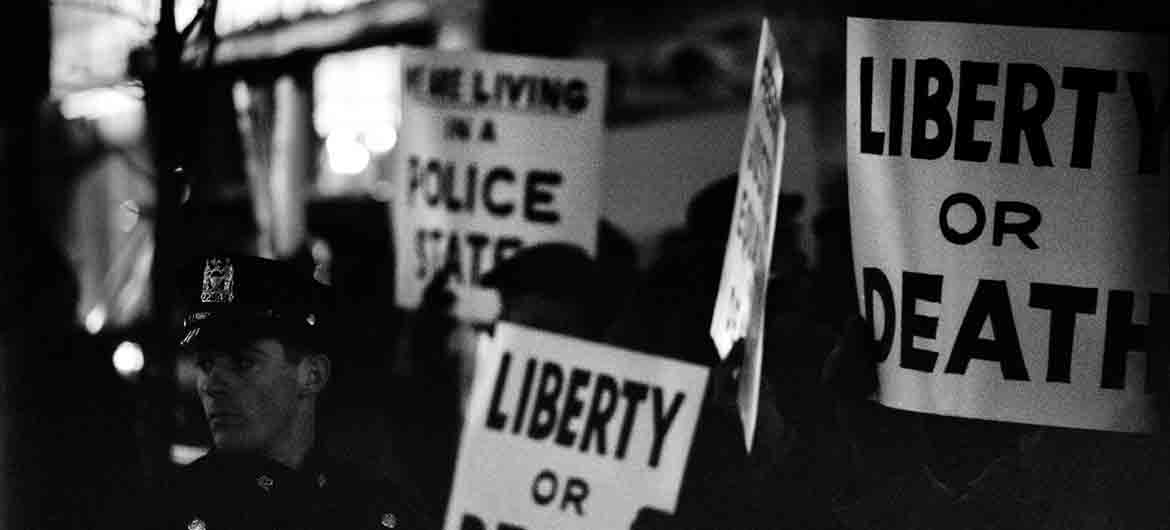The year after the 1955 Montgomery bus boycott, Life magazine asked Gordon Parks to travel to Alabama to photograph the lives of African-American families in the Jim Crow South.
For Life’s mostly white audience—at the time one of the biggest audiences in the nation—Parks portrayed the families at home, at work in the fields, drinking from the “Colored Only” fountain at an ice cream stand. In one photo, a Black woman resplendent in a mint dress with a Black girl in white gown stands under a glowing neon sign reading “Colored Entrance” in Mobile. Parks photographed little Ondria Tanner and her grandmother window-shopping. The store mannequins displaying the children’s clothes, all grinning and white, seem to surround the African American family.
These aren’t the dramatic images of white sheriffs attacking activists with clubs and fire hoses and snarling dogs, but quiet scenes revealing the evil everyday insidiousness of white supremacy.
“I picked up a camera,” Parks told The New York Times in 2002, “because it was my choice of weapons against what I hated most about the world, including racism, intolerance and poverty.”
“Gordon Parks: Selections from the Dean Collection” at Harvard University’s Ethelbert Cooper Gallery of African & African American Art in Cambridge from April 26 to July 19, 2019, is a sensational exhibition, focusing on his astute photos documenting the Black experience in 20th century America. The prints are drawn from the collection of Kasseem Dean and Alicia Keys, whose collection is billed as “the largest private holdings of works by Gordon Parks.”
Parks was a master of visual storytelling. And being Black allowed him access to sensitively tell stories of people of color that white photographers couldn’t or wouldn’t. His images range from people struggling with poverty and racism to activist heroes, from raw moments to intimate times, all portrayed with dazzling style and dignity.
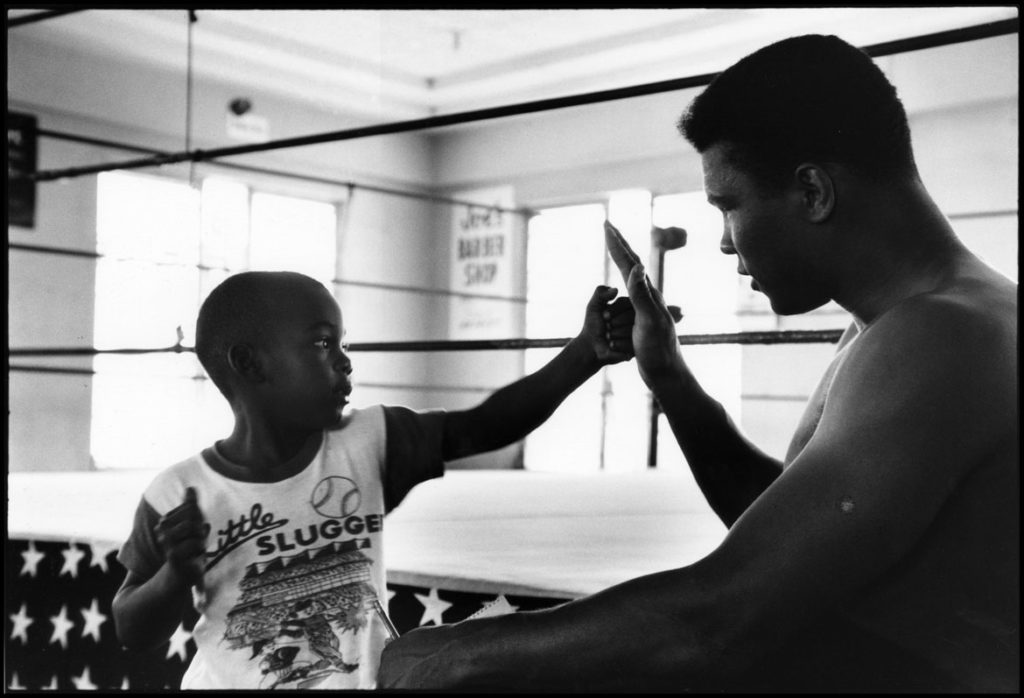
If this is the kind of coverage of arts, cultures and activisms you appreciate, please support Wonderland by contributing to Wonderland on Patreon. And sign up for our free, weekly newsletter so that you don’t miss any of our reporting.
Parks (1912-2006) was the youngest of 15 children of an African American tenant farmer in segregated Fort Scott, Kansas. ”My mother would never allow me to complain about discrimination,” Parks told the New York Times in 1997. ”My father had a saying: ‘Waltz around your enemies and do a fox trot on their backs.’”
Parks would come to write novels and memoirs, poetry, a ballet and orchestral scores. He directed the influential 1971 hit movie “Shaft.” The film’s theme song by Isaac Hayes won an Oscar. At one point in the film, the private eye John Shaft (played by Richard Roundtree) tells his girlfriend that he’s got a couple of problems in life: “I was born black, and I was born poor.”
But Parks first made his name as a photographer for the Depression era Farm Security Administration’s photography project in Washington, D.C., directed by Roy Stryker, and then for Vogue and Life magazines, where he was the publications’ first African American photographer.
”I wasn’t so proud of being the first Black at those places,” Parks told The New York Times in 1997. ”I felt blacks should have been hired before. … I suppose a lot of it depended on my determination not to let discrimination stop me.”
After his mother died when he was in his mid teens, Parks’s landed in St. Paul, Minnesota. He was supposed to live with a married sister, but her husband threw Parks out. Instead, he found work playing piano in a brothel, as a flophouse janitor, as a hotel busboy, playing music in a traveling band (that went bust), laboring with the Depression era government Civilian Conservation Corps. In a 1964 interview for the Smithsonian’s Archives of American Art Oral History project, Parks said he “worked as a waiter on the railway, bartender and road gangs, played semi-professional basketball, semi-professional football, worked in a brick plant, you name it, you know, just about everything.”
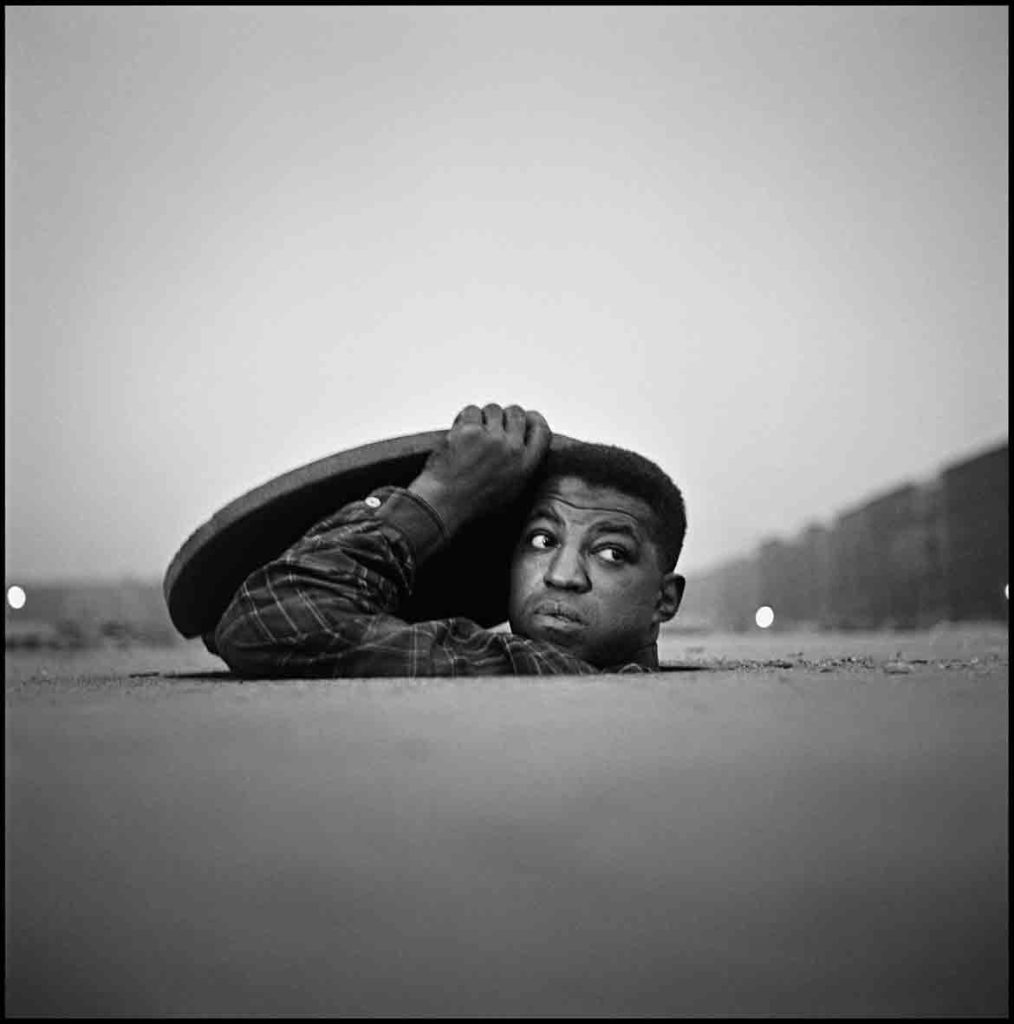
Two things sparked his interest in photography, Parks would recall. He was impressed by newsreel footage he saw of Japanese warplanes bombing the U.S. gunboat Panay off China in 1937. And while employed as a waiter on the North Coast Limited train running between Chicago and Seattle, he found a magazine someone had left behind. Leafing through, he discovered photos from the Farm Security Administration of Americans struggling through the Depression. He aspired to make photos as moving as the work of the federal project’s artists—Dorothea Lange, Jack Delano, Russell, Lee, Mydans, Post Walcott, John Collier, Arthur Rothstein and Ben Shahn.
Parks said he bought his first camera from a Seattle pawnshop in the late 1930s. Back in Minneapolis, he found work photographing fashion for a clothing store in St. Paul. Heavyweight boxing champion Joe Louis’s wife Marva discovered his photos there and encouraged him to pursue bigger opportunities in Chicago. In the Windy City, he photographed society portraits as well as folks struggling on the African American South Side.
“I was trying to express in a social conscious way,” Parks said in the 1964 Smithsonian interview. “I’d become sort of involved in things that were happening to people. No matter what color they be, whether they be Indians, or Negroes, the poor white person or anyone who was I thought more or less getting a bad shake. I, you know, thought I had the instinct toward championing the cause. I don’t know where it came from but possibly the cause was my own early poverty.”
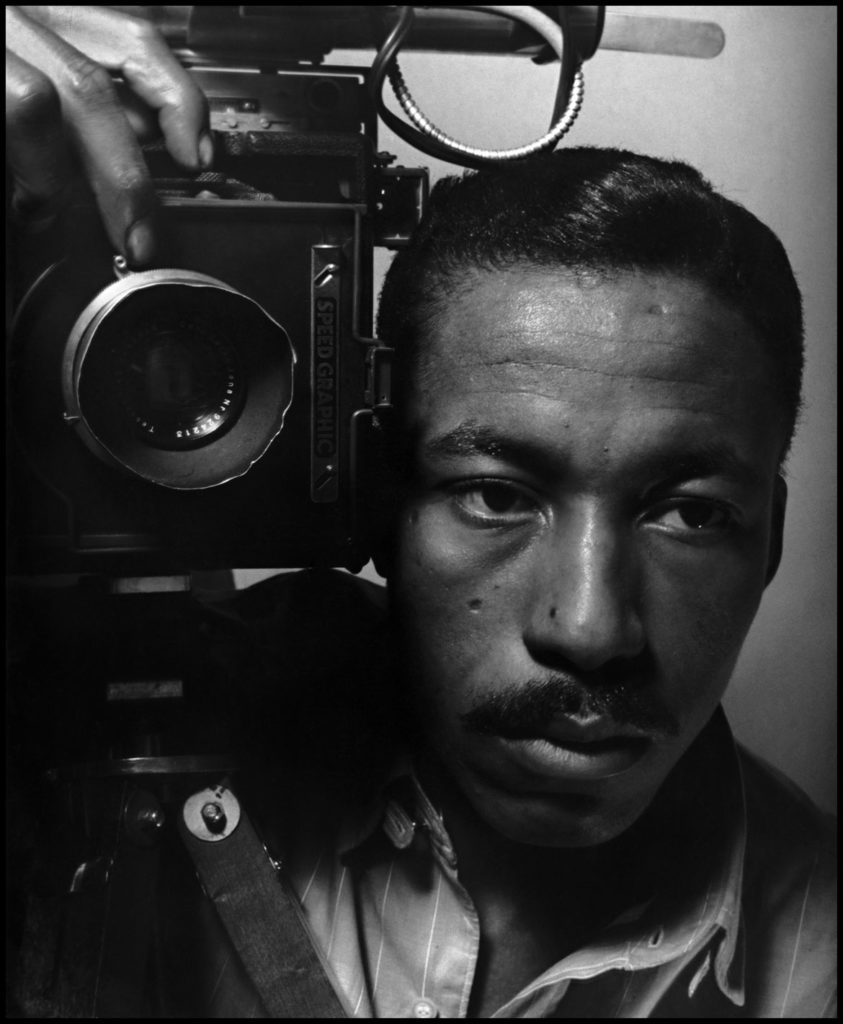
The Harvard exhibition begins with a 1941 self-portrait of the handsome, mustached photographer with his Speed Graphic camera perched on his shoulder.
The following year, the 30-year-old won a spot with the Farm Security Administration photography project, based in Washington, D.C. Racist segregation in the nation’s capital came as a shock. “I used to take my son for a hotdog or malted milk and suddenly they’re saying, ‘We don’t serve Negroes,’ ‘niggers’ in some sections and ‘You can’t go to a picture show.’ Or ‘No use stopping, for we can’t sell you a coat,’” Gordon Parks recalled in the Smithsonian interview.
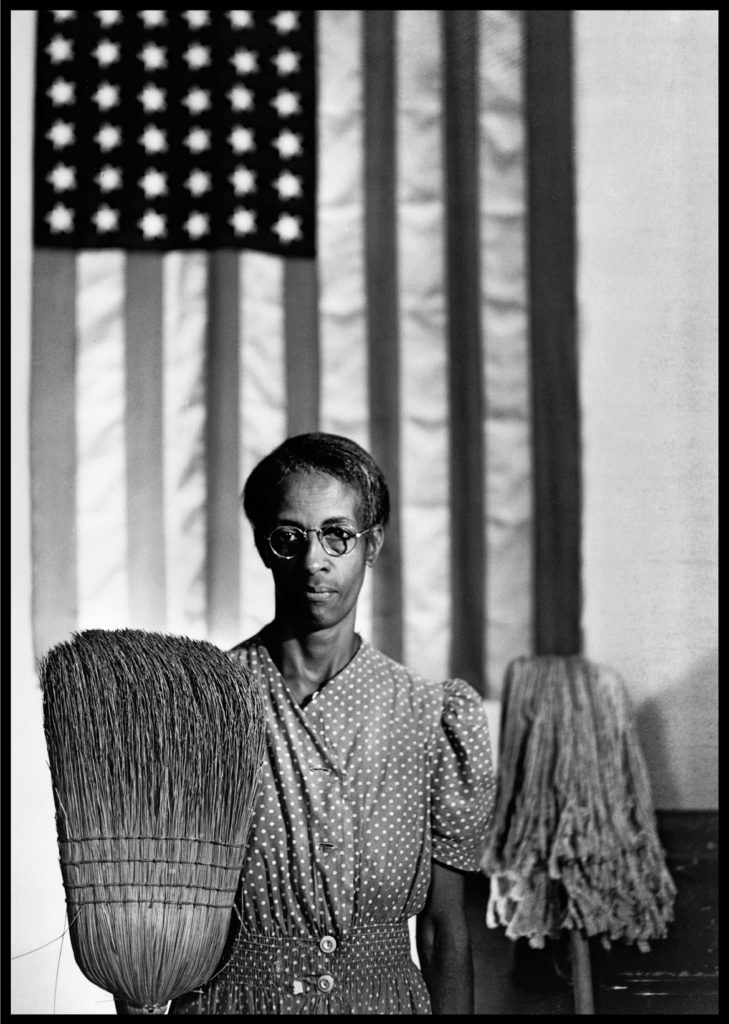
His response was “American Gothic,” his 1942 photograph of a black cleaning woman named Ella Watson. “She had moved into the building at the same time she said as the woman who was now a notary public,” Parks recalled to the Smithsonian interviewer. “They came there with the same education, the same mental facilities and equipment and she was now scrubbing this woman’s room every evening. So out of her I got a charming story but in the heat of all this I took her into this woman’s office and there was the American flag and I stood her up with her mop hanging down with the American flag hanging down Grant Wood style and did this marvelous portrait, which Stryker thought it was just about the end. He said, ‘My God, this can’t be published, but it’s a start.’ So it was published. I sneaked it out and published it in an old paper that used to be in Brooklyn.”
For the federal program, Parks photographed Harlem children and Gloucester fishermen. He explored Maine, Connecticut and Pennsylvania before the project was disbanded in 1943. Parks landed at the federal Office of War Information, photographing the all-Black 332nd Fighter Group pilots based near Detroit—more famously known as the Tuskegee Airmen. His experience with Styker opened doors to jobs shooting fashion photos for Glamour and Vogue magazines and, beginning in 1948, news pictures for Life, where he worked until it ceased weekly publication in 1972.
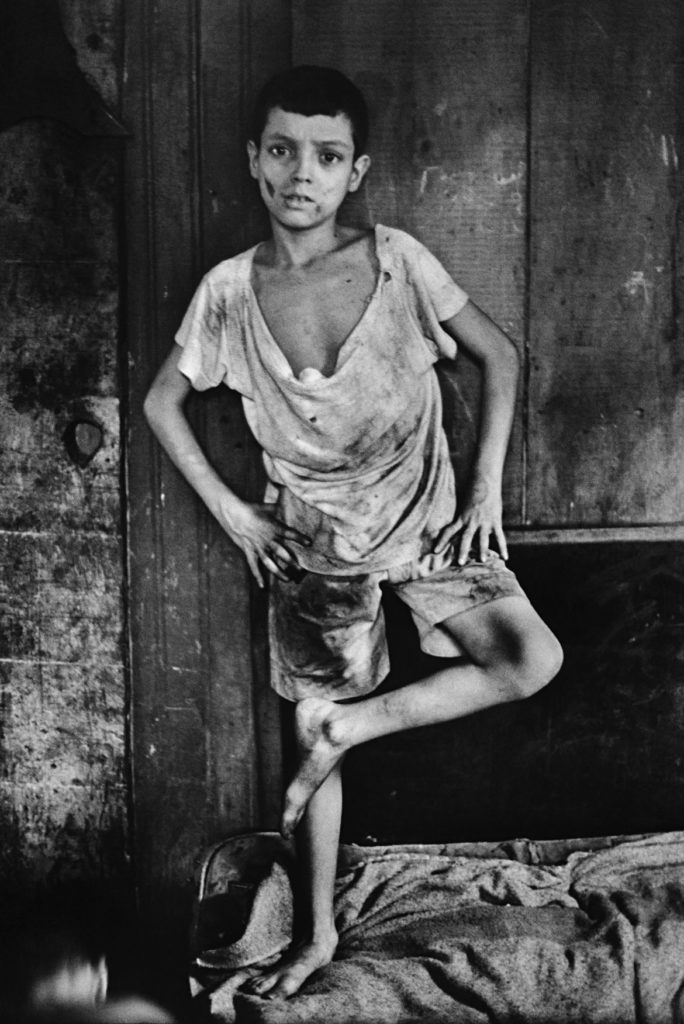
His projects for Life included gritty documentary and fashion portfolios and celebrity portraits. He photographed 17-year-old Leonard “Red” Jackson staring out a broken window for his first Life photo essay, “Harlem Gang Leader,” in 1948 and a destitute boy in Rio de Janeiro in 1961. For a 1950 project that went unpublished by Life, he tracked down and photographed old classmates from Fort Scott, Kansas.
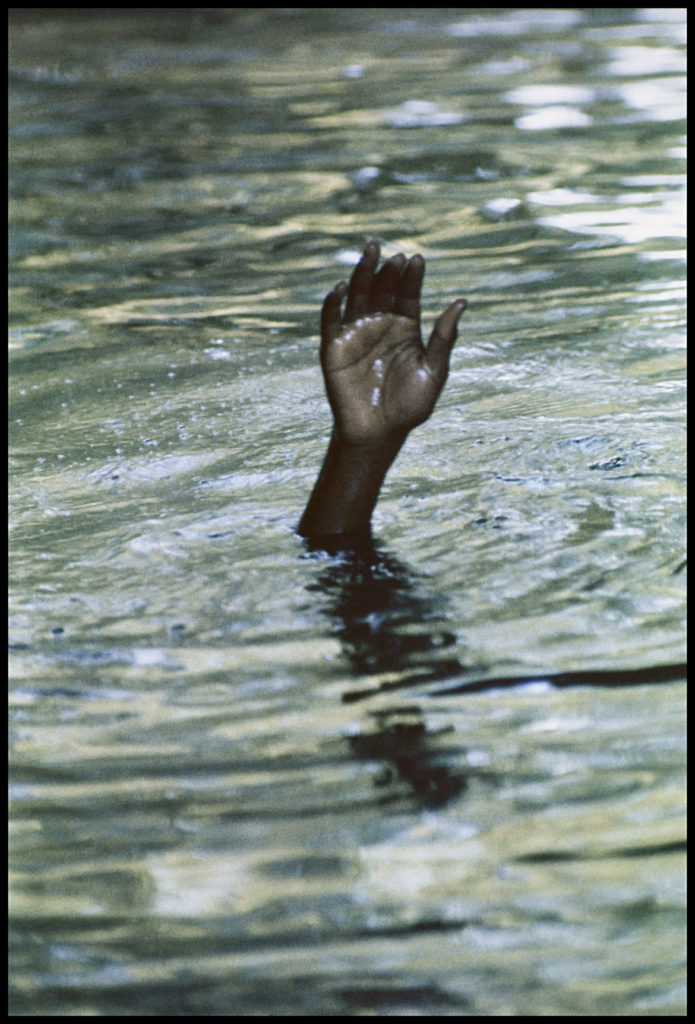
Parks photographed the couture fashion collections in Paris. The Harvard exhibition includes Parks’s portrait of artist Alberto Giacometti sitting among his sculptures of thin, rugged, ragged people in 1951. He photographed Ingrid Bergman, Roberto Rossellini, Marilyn Monroe, Duke Ellington, Barbra Streisand, Ralph Ellison, Louis Armstrong, Samuel Barber, Aaron Copland, Alexander Calder and Gloria Vanderbilt (with whom the thrice-married photographer would have a long affair: ”First of all, he was drop-dead good-looking,” she later said. ”We just looked into each other’s eyes, and we were friends”).
“While working for Life down South on the civil-rights struggle and other events, he was twice threatened with lynching and once escaped by buying a loaded gun before the very eyes of the lynching party,” The New York Times reported in 1997. “On his Hollywood stint he was stopped by the police in Beverly Hills for driving his own Rolls-Royce too slowly; they explained that since he was black they had to make sure the car was not stolen.”

In the 1960s, as the only Black photographer on Life’s staff list, he was sometimes accused by other African Americans of selling out. Meanwhile, his white editors questioned his allegiances. Parks was often skeptical of the Black activists, but he wrote in his 1997 photographic memoir “Half Past Autumn,” “I was black and my sentiments lay in the heart of black fury sweeping the country.”
After winning the blessing of Malcolm X and Elijah Muhammad to photograph the Nation of Islam, Parks photographed an electric Malcolm X at a 1963 Chicago rally. Another photo from that project shows a man and boy standing, palms up, praying, illuminated in rapturous light from a window.
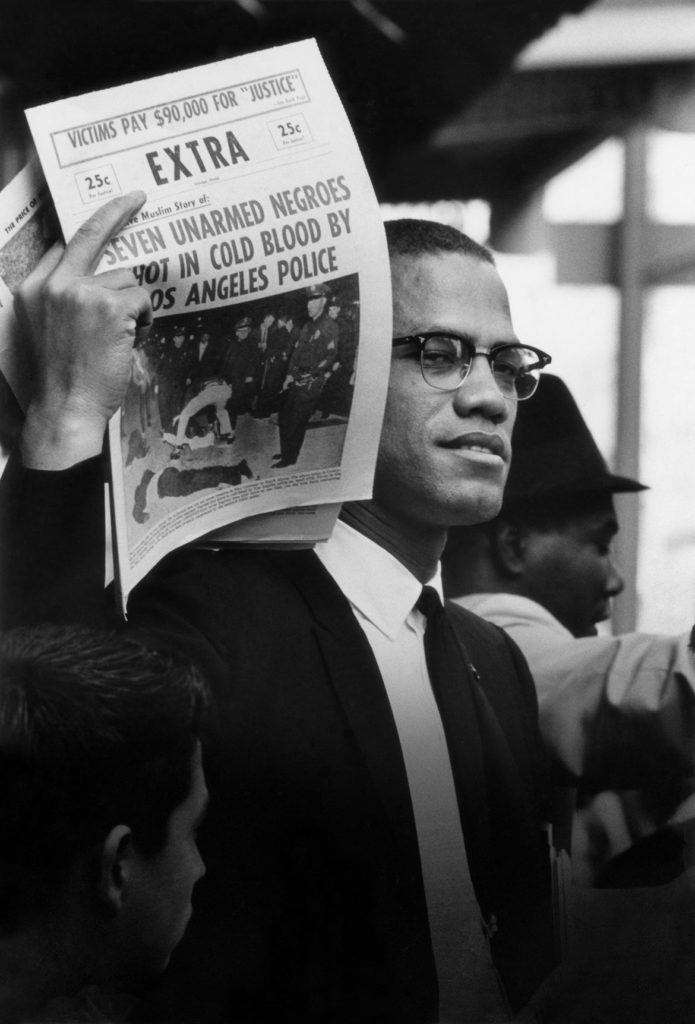
But after Parks wrote in Life about Malcolm X’s murder in 1965, the FBI warned the magazine “that I had been targeted,” Parks recounted in “Half Past Autumn.” The racist FBI was aggressively working to undermine Black empowerment groups, so who knows what was really going on. For his safety, the magazine sent Parks and his family to Europe. Parks wrote that he returned alone a month later, and met with a Nation of Islam security man, parting on good terms.
The Harvard exhibition includes Parks’s photos of Rosa Parks and Jackie Robinson at the 1963 March on Washington. There are photos of a radiant Muhammad Ali in Miami in 1966, training for a fight, mugging for the camera, praying, cruising in a Cadillac convertible with the top down. The exhibition includes Parks’s photo of a 1965 Harlem rally. Protestors in shadow hold signs—“Liberty or Death,” “We Are Living in a Police State”—as a white police officer scans the scene.
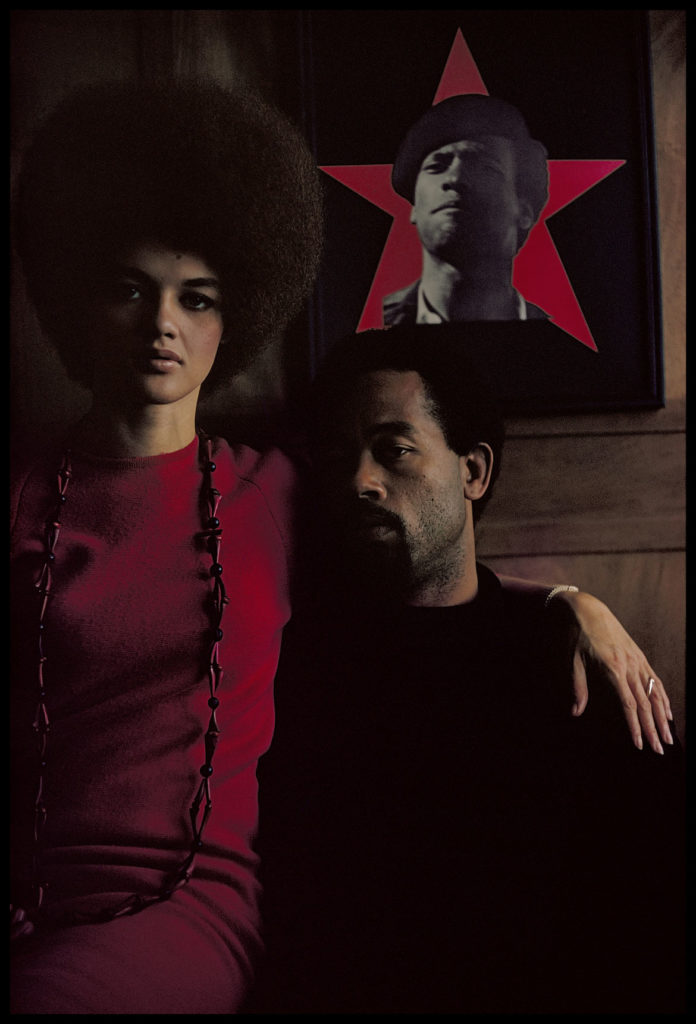
In Algiers in 1970, Parks took an incredibly glamorous and intimate color photo of Eldridge and Kathleen Cleaver, Black Panthers in exile. An icon of Panthers co-founder Huey Newton hangs on the wall above. In “Half Past Autumn,” Parks wrote that Eldridge Cleaver invited Parks to serve as the Panthers’ minister of information: “We need you more than the establishment does.” Parks said he’d lose his journalistic credibility and declined.
“Looking back, I find myself displeased with my reply,” Parks wrote. “Both of us were caught up in the truth of the Black man’s ordeal. I recognized his scars and acknowledged my own.”
If this is the kind of coverage of arts, cultures and activisms you appreciate, please support Wonderland by contributing to Wonderland on Patreon. And sign up for our free, weekly newsletter so that you don’t miss any of our reporting.

